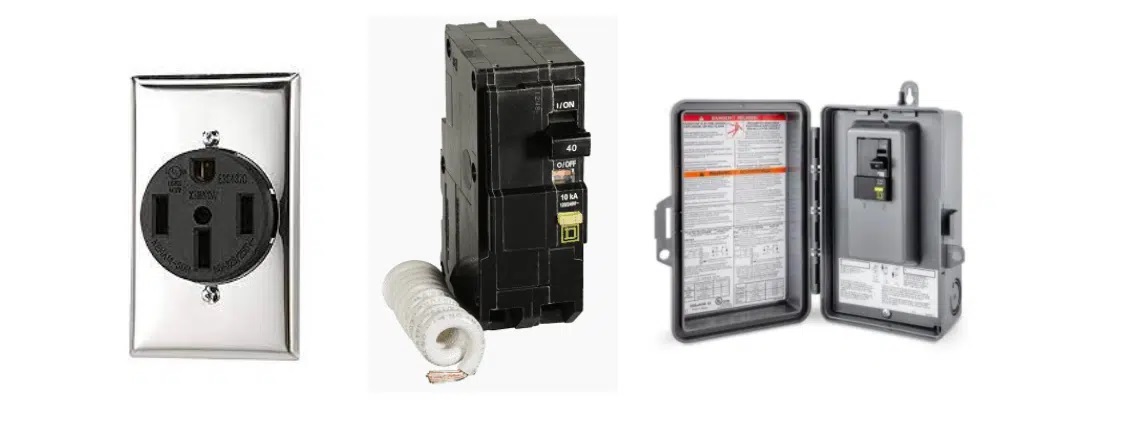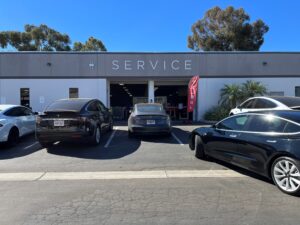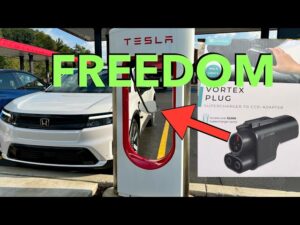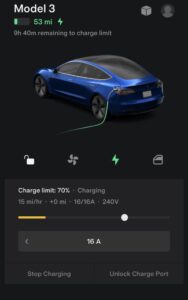Imagine pulling into your driveway, plugging in your Tesla, and knowing that your charging setup is perfectly safe. You’ve invested in a premium electric vehicle, but have you considered the protection needed for your home charging station?
The question of whether Tesla chargers require Ground Fault Circuit Interrupter (GFCI) protection isn’t just technical jargon; it’s about ensuring peace of mind and safeguarding your investment. As you delve deeper into this article, you’ll discover why GFCI protection might be crucial for your Tesla charger, ensuring both safety and efficiency.
Whether you’re a seasoned electric car owner or just starting your journey, understanding this aspect of your charging setup is vital. Let’s explore what GFCI protection means for you and your Tesla.
Tesla Charger Basics
Tesla chargers often require GFCI protection to ensure safety during charging. This protection reduces risks of electrical shock. It is important for installations in wet areas.
Tesla Charger Basics Tesla chargers have become an integral part of owning an electric vehicle. They are designed to efficiently power your car at home or on the go. Understanding the basics of these chargers can help you make informed decisions about installation and safety.Types Of Tesla Chargers
Tesla offers different types of chargers to meet various needs. The Mobile Connector is versatile and can be plugged into standard outlets, making it ideal for travel. Meanwhile, the Wall Connector provides faster charging at home, perfect for those with tight schedules. Each charger type has its unique benefits. You might prefer the convenience of the Mobile Connector for road trips. Alternatively, the Wall Connector is suited for more permanent installations, offering a sleek design and faster charging speeds.Installation Requirements
Proper installation of Tesla chargers is crucial for safety and efficiency. A certified electrician should handle the setup to ensure everything meets local electrical codes. This is where GFCI protection often comes into the conversation. Why consider GFCI protection for your Tesla charger? Ground Fault Circuit Interrupters (GFCIs) are designed to protect you from electrical shock. Especially in areas where water might be present, such as garages, GFCI is a valuable safety measure. Have you ever wondered about the importance of following these requirements? Ensuring your charger is installed correctly could save you from potential hazards. Plus, it can optimize your charging experience, giving you peace of mind every time you plug in your vehicle. In your personal experience, have you faced any challenges installing a Tesla charger? Consider sharing your insights or learnings. This could help others avoid common pitfalls and make the most out of their Tesla charging setup.Understanding Gfci Protection
Electric vehicles are changing the way we think about transportation. As more Tesla owners install home chargers, understanding safety features is crucial. One important aspect is Ground Fault Circuit Interrupter (GFCI) protection. This safety feature prevents electrical shocks and ensures safe charging.
What Is Gfci?
GFCI stands for Ground Fault Circuit Interrupter. It is a device that protects people from electric shock. GFCI monitors the flow of electricity in a circuit. It detects any imbalance between the incoming and outgoing current. A small difference can indicate a dangerous fault. GFCI is vital for areas near water, like bathrooms or kitchens.
How Gfci Works
GFCI works by constantly checking electrical current flow. It compares the amount of current going in and out. If it senses a difference, it cuts off power. This happens in milliseconds to prevent harm. The GFCI device can stop severe shocks. It can prevent electrocution effectively.
Understanding how GFCI works helps ensure safety. Knowing its role in Tesla chargers can protect your home. Installing GFCI protection is a wise choice. It adds an extra layer of safety to your charging setup.
Safety Standards For Ev Chargers
Tesla chargers typically do not require GFCI protection as they are designed with advanced safety features. Electrical safety standards ensure proper functioning and user protection. It’s crucial to follow local regulations and manufacturer guidelines when installing EV chargers.
Electric vehicles (EVs) are gaining popularity worldwide. With this rise, safety standards for EV chargers become crucial. Chargers must meet strict guidelines to ensure user safety. This involves compliance with global and specific manufacturer standards.Global Safety Regulations
Most countries have set rules for EV charger safety. These rules ensure chargers are safe and reliable. They cover aspects like electrical hazards and environmental impact. The International Electrotechnical Commission (IEC) sets many of these global standards. It ensures chargers can be used safely in different regions. Compliance with IEC standards is vital for any EV charger.Specific Standards For Tesla
Tesla has specific safety guidelines for its chargers. These standards align with global norms but have unique elements. Tesla chargers prioritize both user safety and efficiency. They incorporate features that minimize electrical risks. Ground Fault Circuit Interrupter (GFCI) protection is one such feature. It prevents electrical shocks by cutting off power during faults. Tesla ensures its chargers meet these protective measures. “`
Credit: qmerit.com
The Debate On Gfci For Tesla Chargers
Tesla chargers spark a debate on GFCI protection. Many question its necessity for safe operation. Understanding these devices’ electrical safety is crucial for informed decisions.
The debate on whether Tesla chargers need GFCI (Ground Fault Circuit Interrupter) protection is a hot topic among electric vehicle enthusiasts and electricians alike. As more Tesla owners install home charging stations, questions arise about the necessity of additional safety measures. Should you prioritize GFCI protection for your Tesla charger, or is it an unnecessary expense?Arguments For Gfci
Many experts advocate for GFCI protection due to its ability to prevent electrical shock. GFCIs monitor electrical current and quickly shut off power if they detect a ground fault, adding a layer of safety. This is especially important in damp environments like garages, where water and electricity can be a dangerous mix. GFCIs also provide peace of mind. Imagine plugging in your Tesla after a long day and knowing you’re protected from potential electrical hazards. For many, this reassurance is worth the investment.Arguments Against Gfci
On the other hand, some argue that GFCI protection for Tesla chargers might not be necessary. Tesla chargers are designed with built-in safety features that already minimize the risk of electrical faults. This can make additional GFCI protection seem redundant. There’s also the consideration of nuisance tripping. GFCIs can sometimes trip unnecessarily, causing inconvenience. If your Tesla charger is frequently cutting off power without any real issue, it might lead to frustration and unnecessary troubleshooting. So, where do you stand? Do you prioritize maximum safety or lean towards trusting the built-in protections? Your decision might depend on your specific environment and personal comfort with electrical safety.Installation Best Practices
Installing a Tesla charger requires careful planning and attention to safety. Proper installation ensures efficient charging and minimizes risks. Following best practices enhances performance and safety.
Recommended Safety Measures
Ground fault circuit interrupter (GFCI) protection is crucial. It prevents electrical shock and ensures user safety. Install GFCI devices in wet or damp locations. Regularly inspect equipment for wear and tear. Ensure chargers are free from obstructions. This reduces overheating risk.
Professional Installation Tips
Hire a certified electrician for installation. They understand local codes and requirements. Professional installation ensures compliance with safety standards. Electricians provide quality workmanship. They troubleshoot issues effectively.
Use manufacturer guidelines for installation. Follow step-by-step instructions carefully. This prevents common errors. Ensure correct wire size for your charger model. Proper wiring supports efficient current flow. Verify connections are secure. Loose connections can cause malfunctions.

Credit: www.youtube.com
Future Of Tesla Charging Technology
The future of Tesla charging technology is an exciting frontier. As electric vehicles become more popular, Tesla continues to push boundaries. Charging stations are evolving to meet growing demands, improving efficiency and safety.
Innovations In Charger Design
Tesla is not just about cars; it’s about transforming how you charge them. The design of Tesla chargers is becoming more streamlined and user-friendly. Imagine pulling up to a station and having your car charged faster than ever before.
New chargers might be smaller, blending into urban landscapes. The aesthetics are appealing, but the performance is what really counts. How would you feel if charging your car was as quick and easy as filling a gas tank?
Potential Changes In Safety Protocols
Safety is a top priority for Tesla, and charging technology is no exception. You might wonder if current safety protocols are enough. As technology advances, so will safety measures.
Consider the possibility of chargers equipped with sensors to detect malfunctions. This could prevent issues before they arise. What if these new protocols make charging as safe as using your home appliances?
Think about the impact of these changes on your daily life. Would enhanced safety make you more comfortable with electric vehicles? The future holds exciting possibilities, and your feedback could shape it.

Credit: www.reddit.com
Frequently Asked Questions
Do Ev Chargers Need To Be Gfci Protected?
Yes, EV chargers must be GFCI protected. This prevents electric shock and ensures safety. GFCI protection is a requirement in many electrical codes. Ensure compliance for safe charging.
Does An Electric Range Need To Be Gfci Protected?
Electric ranges do not typically require GFCI protection. The National Electrical Code mandates GFCI for kitchen countertop receptacles. Always consult local codes for specific requirements.
What Are The Electrical Requirements For A Tesla Charger?
Tesla chargers typically need a 240-volt outlet with a dedicated circuit. Choose a 60-amp breaker for optimal charging speed. Ensure the installation complies with local electrical codes. Consult a certified electrician for installation to guarantee safety and efficiency. Consider future upgrades like a wall connector for faster charging.
What Breaker Is Needed For A Tesla Charger?
A Tesla charger typically requires a 60-amp circuit breaker. Ensure compatibility with your model and installation guidelines. Consult a professional electrician for accurate installation and safety. Proper installation ensures optimal charging and performance. Always check Tesla’s official recommendations for specific charger requirements and specifications.
Conclusion
Tesla chargers benefit from GFCI protection. It enhances safety by preventing electric shock. This makes charging safer for everyone involved. Always prioritize safety when installing chargers. Consult professionals for best practices. They ensure proper setup and compliance with safety standards.
Understanding these requirements protects both users and equipment. With this knowledge, enjoy the convenience of your Tesla. But with peace of mind. Stay informed and make informed choices. Charging safely matters.


